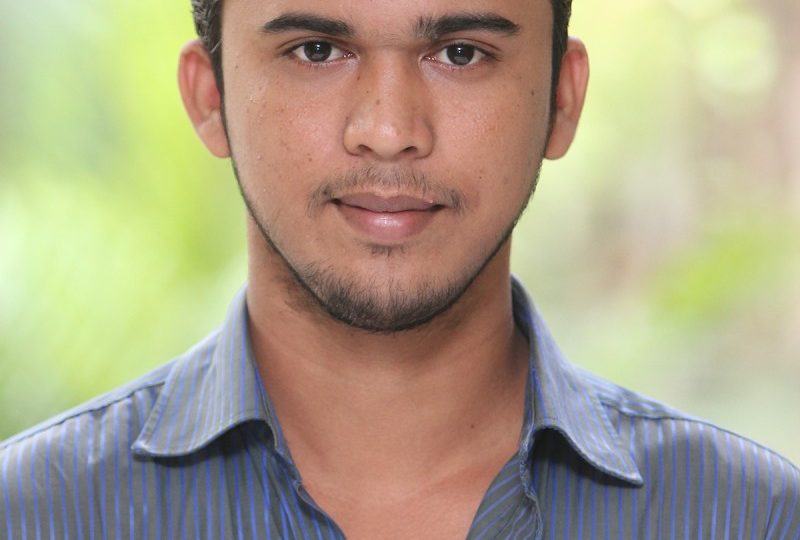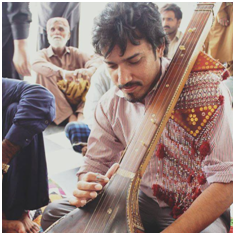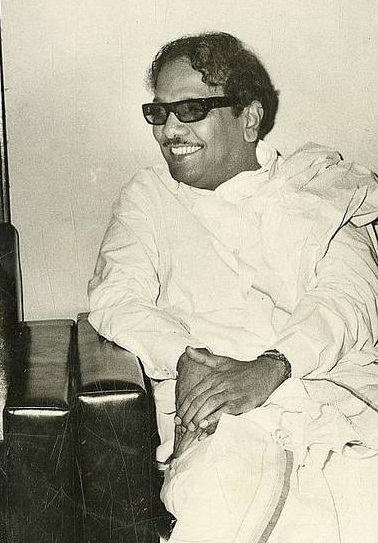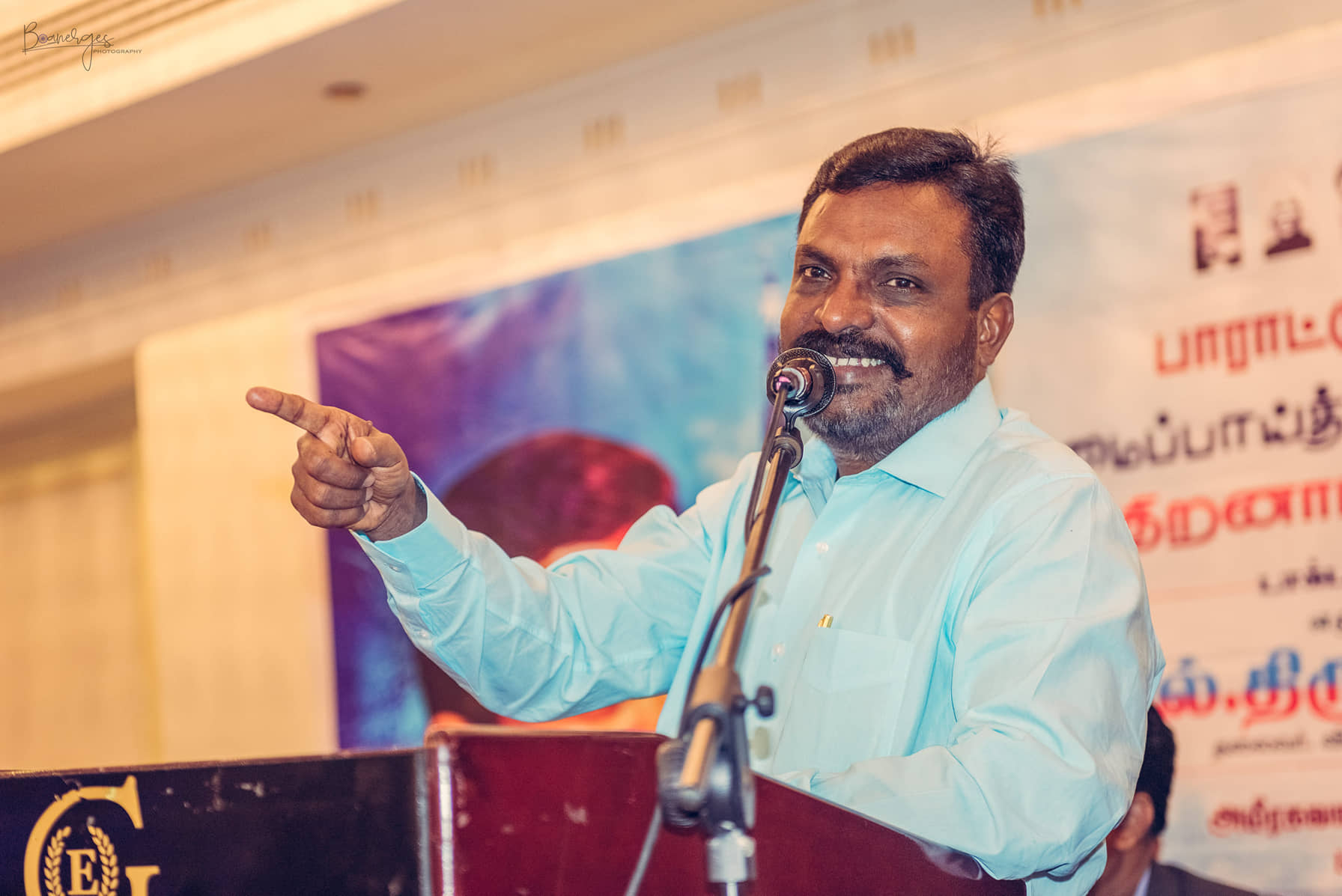Pralay Nagrale
 The recent mobilization of the Valmiki community all over India was important in fighting for justice for the 19 year old girl of Bulgaddhi village of district Hathras, because till now, the protests of the Valmiki community used to be on local levels, mostly. But this resistance did not happen suddenly. It was a rage which was within the communities for a long time. There has been a protest against the TV serial in Punjab in September 2019 where the Valmiki Action Committee against the Ram Siya ke Luv Kush which was airing on Colors TV.
The recent mobilization of the Valmiki community all over India was important in fighting for justice for the 19 year old girl of Bulgaddhi village of district Hathras, because till now, the protests of the Valmiki community used to be on local levels, mostly. But this resistance did not happen suddenly. It was a rage which was within the communities for a long time. There has been a protest against the TV serial in Punjab in September 2019 where the Valmiki Action Committee against the Ram Siya ke Luv Kush which was airing on Colors TV.
In September 2019 in Bhavkhedi, Shivpuri district, Madhya Pradesh, two children, Roshni (12 Years), Avinash Valmiki (10 Years) were killed for open defecation. Those two children were killed for defecating near the house of a Yadav family. After this incident Roshni, a 12 year old girl who wanted to become a doctor, had stopped going to school due to the casteist harassment by teachers of the school. In the school she was made to sit separately and asked to bring utensils from home. In this village there are only two homes of the Valmiki community and they were engaged in cleaning toilets in the village. The villagers did not attend the funerals of Avinash and Roshni.
This incident has also led to protests in the Shivpuri district for the arrest of culprits. In September 2019, members of the Valmiki community protested when they found that the statue of Valmiki was demolished in the temple near KGMU campus, Lucknow. In August 2019, after the Delhi Development Authority demolished Raidas Temple in South Delhi’s Tughlakabad people from Punjab, Haryana, Uttar Pradesh and Rajasthan etc gathered in Delhi where Delhi Police had also done lathicharge and fired teargas on the protesters. This protest was led by Bhim Army Chief Chandrashekhar Azad. Other than this, there were many other atrocities that happened against the communities.
Even from the beginning of COVID the communities engaged in cleaning work were not provided with the basic prevention kits. Though there have been many voices asking for protection kits for doctors which was important to prevent doctors from COVID. Even before COVID, the sanitation workers faced a lot of health risks, mostly respiratory problems, but never were any voices for protective gear for them raised. After COVID, their health is in more danger. And instead of providing them with masks their work has been romanticized and flowers were showered on them. Kranti Khode, social worker who works against violence against women in Madhya Pradesh, writes “It’s not that they are not scared of this pandemic but they get their two time food from their work only. They can feed their family from their work only.” Everything from medical waste to cremation of dead bodies and sanitizing the city is done by workers from this community only. She adds that “Work from home does not fit for the community because they had to work in the city and when the doctors despite using protective gear are getting infected with the virus, how will this community be able to survive?” Though oppression against this community had been going on from ages, even in the time of a pandemic no empathy has been shown to these workers. Kranti Khode writes that people do not even give water to those workers and even if they give, tap water will be given which will not even be clean enough to drink.
There have been many news reports of the violence and discrimination against sanitation workers even in these times of the pandemic. A sanitation worker died as he was forced to drink sanitizer in April 2020 in Rampur, Uttar Pradesh because he accidentally sprayed the sanitizer on the foot of another person. In Lakhimpur Kheri, Uttar Pradesh the barbers have decided not to cut the hair of people from the Valmiki community due to fear of COVID.
When these atrocities occurred, these news were also getting circulated in the Whatsapp groups of the community members. There are many community Facebook groups where information about atrocities was flowing. Dean, in her book ‘Democracy and other Neoliberal fantasies,’ says that even the new media technologies strengthen the hold of neoliberalism and the privilege of the top one percent on the planet. At the same time, globally networked communications remain the very tools and terrains of struggle, making political change more difficult and more necessary than ever before. Even before the news of the gang rape in Hathras was in the media, it was already on social networking sites and in Whatsapp groups of the communities.
Though due to the influence and myths fed by organizations like Rashtriya Swayamsevak Sangh, right wing groups and hindu mythologies, these communities are ‘sanskritized’. From earlier times the communities are fed the myth that they are born to do only cleanliness work all their life due to their bad deeds in a past life. They were also told from ages that they are doing the service of Gods. The 14th Prime Minister of India, glorifying this inhuman work, said that sanitation work is a spiritual experience in his book Karmyogi. However, many of these myths were broken and one of the most important factors in recent times was the flow of information through social networking sites. Talking about communicative interactions, Dean says that interactions of the public spheres, circulation of content and media chatter not only impact but also constitute official politics.
Continuous atrocities against the community in recent times and the flow of information led to the sudden mobilisation in many parts of India in the fight for justice for the 19 year old girl of Hathras. The names of many community Whatsapp groups were changed to Justice for [name of the girl] and RIP [name of the girl] and new Facebook pages were created with the same name asking for justice. Members of the Valmiki Community of Meerut, Uttar Pradesh were the first in the district to demand strict action against the culprits of Hathras gang rape. These community members held rallies and the sanitation workers had decided not to work for a day. It was followed by protests in other cities of Uttar Pradesh, Rajasthan, Madhya Pradesh, Uttarakhand, Punjab, Madhya Pradesh, Maharashtra, Delhi, etc. In many places sanitation workers decided to stop working. In many cities including Agra and Lucknow, garbage was thrown in front of Government offices and on roads as a protest.
This kind of resistance was last seen in Una, Gujarat, where sanitation workers had stopped sanitation work and thrown dead bodies of cows in front of the collector’s office. On 11 July, 2016 the four members of the Survaiya family were beaten brutally by right wing elements with sticks, iron roads and knives on the suspicion of killing a cow. The video of the event was circulated all over India, and led to huge protests all across India. The next day after the atrocity, a huge protest was organized in the Chandkheda area of Ahmedabad where the state highway was blocked. Jignesh Mevani, a Dalit activist and MLA from the Vadgam constituency of Gujarat Legislative Assembly, led a huge protest march named ‘Dalit Asmita March’ from Ahmedabad to Una where thousands of people gathered.
I still remember, on the last day of the march, I was returning from Una to Mumbai with two of my female friends. While we were crossing the Samter village which is just 10 km from Una, violence broke out in the village where people from the Dalit community were targeted by the upper castes communities just for joining the protest. As the firing was going on, our bus passed with police protection. Since we were coming from the protest and carrying placards of slogans, we were scared even inside the bus. When our bus crossed the village, we saw the people from Dalit communities carrying their belongings and leaving the village due to the violence of upper castes. That day was 15th August 2016, when the Indian state was celebrating its 69th Independence day.
After moving further we got many phone calls with information about violence against people who attended protests in different parts of the state. Two years after these incidents, the victims of the Una incident were attacked again by one of the persons who was out on bail when the victim family was going for the preparation to adopt Buddhism saying that they decided to convert to Buddhism from Hinduism because Hinduism discriminates between people of the same faith on the basis of their caste and occupation. And there is no discrimination in Buddhism which teaches all to live equally and respect each other. This is the reason they have decided to convert from Hinduism to Buddhism.
There are two reasons why I mentioned the Una incident here. First, because of the act of resistance of throwing dead cows in front of the collector’s office in Una and its similarities to throwing the garbage in front of the Government office in different cities after the Hathras atrocity. In his story “Saapla”, Anna Bhau Sathe explains what happens when Dalits decide to stop working in a village. He mentions that the upper castes in the village are more sad because nobody was going to remove the dead cow from their house, rather than the death of the cow. When nobody removes the dead body of the cow, the upper castes of the village hold a meeting in a village being scared that if Mahars do not remove the dead body of the cow they will have to do it on their own. In the meeting one of the members from an upper caste community says that “Mhatari melyacha dukkha naahi, pan kaal sokaavtoy hyacha aaj ichaar zala pahije (There is no sadness in death of old women, but we should think that time is passing by)”. And then the Patil says “Mhanji asa, dhor maru dya, pan mhara dokyawar basu deu naka, asach nava. ( You mean, let the cow die, but don’t let the Mahar sit on the head, Isn’t it ?)”. In the story, the upper castes themselves have to remove the dead body of the cow because dalits were not ready to compromise.
The second reason is the way victims in Una were attacked even after two years of the incident: it reminds me of the DM of the Hathras district threatening the family of the victim saying that the media is there today but it will not be there tomorrow, what you will do”. Frankly speaking, what the DM of Hathras is saying is true. Despite the media coverage of the Una incident, the victims of Una were attacked. Despite the media attention on the Unnao rape case where the culprit is an ex-BJP MLA, the family of the victim is dead. And even in this case of Hathras, the dominant castes of the village were saying to the media “when you leave we are going to repeat the same incident again”.
When sanitation workers went on strike in Bhopal, the Times of India reported it with the headline “Bhopal stinks as sanitation workers go on a strike”. I will leave this headline to readers to interpret. Talking about the media coverage of the Hathras incident, the media was trying to do damage management (post Sushant Singh Rajput case media trial) through the coverage of this case, in which they apparently failed after the intervention of the State Government through a PR agency. When people from the Valmiki Community were protesting against the gangrape of a 19 year old girl from Bulgaddhi village of district Hathras (Uttar Pradesh, India), NDTV, which is one of the ‘progressive’ channels in India, was broadcasting a 12 hour special programme ‘Swasthya Mantra Telethon’ whose brand ambassador is Amitabh Bachchan, an Indian celebrity actor. It was a campaign which focused on health, hygiene, sanitation and environment which was aired on 2nd October 2020. In this campaign, Bachchan had a conversation with Bezwada Wilson, founder of Safai Karmachari Andolan, which is a Human Rights organization that campaigns for the eradication of manual scavenging. Mr Wilson is also a Ramon Magsaysay Award winner (2016).
In the conversation, Bachchan, while speaking to Mr Wilson, mentioned his concern about the 25 machines he donated to the workers, asking them not to “sell” them and use it for their own safety. He had also donated a machine to Brihanmumbai Municipal Corporation. Though Mr. Bachchan after saying this also said that he doesn’t normally talk about these things because he believes charity needs to be done, not to be talked about. Mr. Bachchan’s concern was that he never heard about what happened to those machines but he read about the deaths of manual scavengers. He asked Mr. Wilson what we can do and what needs to be done to repair this. Mr. Wilson answered that individuals can make little changes in society but policy intervention is needed for the bigger changes. He also added that just mechanisation is not the solution.
The utopian solution of technology intervention has been given for a long time to eradicate manual scavenging and stop deaths happening in septic tanks by NGOs and Civil Societies. Even if they are provided with technology, the operators of those machines will still be coming from the Valmiki Community and caste based work is going to be continued anyway. Sure, if machines are used, the lives of many sanitation workers who get inside the septic tanks can be saved but technological remedies are not going to liberate the community from the caste oppressions. However, this has always been made a part of the debate within the Media, Academia and Civil Society.
Further in the conversation, when Mr Wilson talked about Caste and Patriarchy, Mr. Bachchan replied and I quote, “Also the fact you mentioned about, you know, the caste, this is not a platform to talk about caste”. I don’t know what made Mr. Bachchan say this – was it the anchors who were sitting beside him, channel, sponsors of the programme or Mr. Bachchan himself. But right after saying this he does not forget to add and I quote, “there are human beings and there is one very particular gentleman who has worked on this issue. I am not going to talk about caste because he came from a higher caste.” Mr Bachchan and NDTV held a 12 hour programme on hygiene and sanitation but failed to acknowledge the relation between caste and sanitation.
Mr. Wilson added that the reason behind the silence from the Government side is because the people who are dying are from scheduled castes and we don’t value all lives equally. Judith Butler says “So what we see is that some lives matter more than others, that some lives matter so much that they need to be protected at all costs, and that other lives matter less, or not at all. And when that becomes the situation, then the lives that do not matter so much, or do not matter at all, can be killed or lost, can be exposed to conditions of destitution, and there is no concern, or even worse, that is regarded as the way it is supposed to be.”
When Mr. Wilson says, we don’t value all lives equally, it truly applies to the lives of sanitation workers (who mostly come from the Valmiki Community) who die everyday in septic tanks. Even after the “The Prohibition of Employment as Manual Scavengers and their Rehabilitation Act, 2013,” their social, political and economic conditions did not change. The education rate of this community is not even one percent. The dominant narratives ask these communities to get educated. However, when children from these communities go to the school they are asked to clean the toilets which makes those children leave the schools even before they reach higher education. When they try to change their jobs they won’t be given the other jobs due to the caste stigma attached to them.
While working on the report “Justice Denied: Death of workers engaged in cleaning sewer and septic tanks,” I, along with my team, visited one of the districts in Madhya Pradesh. Prashant (name changed) who used to work as a sanitation worker after the death of his elder brother shared how, when he got inside to clean the septic tank, he decided to stop this work and do some other work. He started a cloth business in the district, but nobody used to buy clothes from his shop because the social psychology of the society does not allow them to buy from scavengers turned businessmen. Prashant had to shut down his shop and go back to sanitation work again. Even when sanitation workers and manual scavengers migrate to the city or get educated, scheduled castes were considered ‘lower’ in the social hierarchy and scheduled tribe populations benefited less from migration as social discrimination continued to impact them in the places they migrated to.
The work of manual scavenging and death of sanitation workers had never been a mainstream issue. Professor Gopal Guru, while talking about the limited understanding of labour in academia, says that labour is only attached to livelihood, wages, placements and academic qualifications etc. There are associated conceptions of labour rights. Your rights as labourers are according to your qualification and rights according to your capacity of labour. You get your right because of your ability to work. So right to labour belongs to your physicality and talents. Professor Guru adds one more layer beyond physicality and talent, and that is ‘moral right to labour’ which means one should have labour which gives equal dignity.
Dignity is a word which is included in the preamble of the Indian constitution (the same preamble which was a text of “attraction” during the anti-CAA protests). When it comes to the manual scavenger’s work, it’s not only an undignified job but it is also an inhuman work. It is the same with sanitation work. When someone is sent inside the septic tank, the person is sent to be dead. But even when the death happens inside the septic tank their bodies are taken out in an undignified and inhuman manner. The family has to fight even for filing the FIR report. And even if the FIR report is filed, an atrocities case act will rarely be added. For those who love data, as per the report “Justice Denied : Death of workers engaged in cleaning sewer and septic tanks,” there has been a zero percent prosecution rate in these cases. The family even has to fight for the compensation which they are supposed to get as per the M.S. Act 2013. Mostly when demands are not met, the community members protest at the local level so that the FIR be filed and the compensation be given to the family of the deceased. These protests have always been ignored by the Media, Activists, Civil Societies and Academicians. Even in universities where student politics is active, the issue of the death of sanitation workers has never been a part of their “Activism”.
Going back to the community mobilisation after the Hathras gang rape incident, this was the right time for the community to raise its voice against the systematic oppressions which were going on for ages. Yet again their protests and issues were overshadowed by the protesters in Delhi and Bombay through their fancy slogans, fancy placards and celebrity activists. Not to mention the language of those protests which sounded like any other other protest post 2014. The responsibility of the protesters was supposed to be strengthening the local protest but all they did was celebrity activism which helped the state to suppress the voices.
In the many debates, webinars and articles about the Hathras Rape incident, there has been mention of and comparision with the Khairlanji Hatyakand (Massacre) which was wrong in many ways. I don’t want to go here into the theory and debate of intersectionality, but would like to hint at what Gopal Guru said while addressing the Indian Association of Women’s Conference, Delhi (2020) – that Constitutional Principles have no intersectionality. Also, intersectionality has a big problem in methodology. After Hathras incident there had been many webinars, TV debates and talks on the incident, and even though there was representation of Dalit women in those debates there was very rare representation of women from the Valmiki Community in any of them, which also raises the question of ideology in intersectionality.
In one of the conferences, I was asked for my views on the solution to the problems of manual scavenging and I could only reply saying that first we need to have social and political will to get rid of these inhuman practices. As Dr. B. R. Ambedkar said (1936) in his book Annihilation of Caste, the outcaste is a by-product of the caste system. There will be outcasts as long as there are castes. Nothing can emancipate the outcaste except the destruction of the caste system.
~
References
“We As Indian Citizens Must Take Actions To Stop Manual Scavenging: Bezwada Wilson” (NDTV)
“What’s Wrong With ‘All Lives Matter’?” (The New York Times, January 12, 2015)
“New Report: Justice Denied – Death of workers engaged in manual scavenging (Rashtriya Garima Abhiyan)” (International Dalit Solidarity Network, November 2, 2018)
“Punjab: Amarinder Singh orders ban on TV serial after protests by Valmiki community” (Scroll.in, September 8, 2019)
“Killing of Dalit children exposes caste faultlines in MP village” (The Indian Express, September 27, 2019)
“केजीएमयू में वाल्मीकि मंदिर तोड़े जाने पर बवाल, पुलिस को अज्ञात के खिलाफ मिली तहरीर” (Amar Ujala, September 19, 2019)
“Explained: Why are Dalits agitated over demolition of Ravidas temple in Delhi” (India Today, August 23, 2019)
“सफाई कर्मचारीयों के मुद्दे क्या अदृश्य हैं जो व्यवस्था को नज़र नहीं आते?”, क्रांति खोड़े (Round Table India, July 1, 2020)
“Coronavirus: Sanitation Worker Forced to Drink Disinfectant in UP’s Rampur, Dies” (India.com, April 19, 2020)
“हाथरस की बिटिया के साथ दरिंदगी : आज शहर में न कूड़ा उठेगा और न सफाई होगी” (Jagran, October 1, 2020)
Gujarat: Una Dalit family whose members were flogged by cow vigilantes, to embrace Buddhism (DNA, April 28, 2018)
Gopal Guru, Indian Association for Women Conference (2020)
Dean, Jodi. (2009). Democracy and Other Neoliberal Fantasies: Communicative Capitalism & Left Politics.
Ambedkar, Bhimrao Ramji. Annihilation of Caste With a Reply to Mahatma Gandhi: And Castes in India: Their Mechanism, Genesis, and Development.
~~~
Pralay Nagrale is an Independent Researcher.










